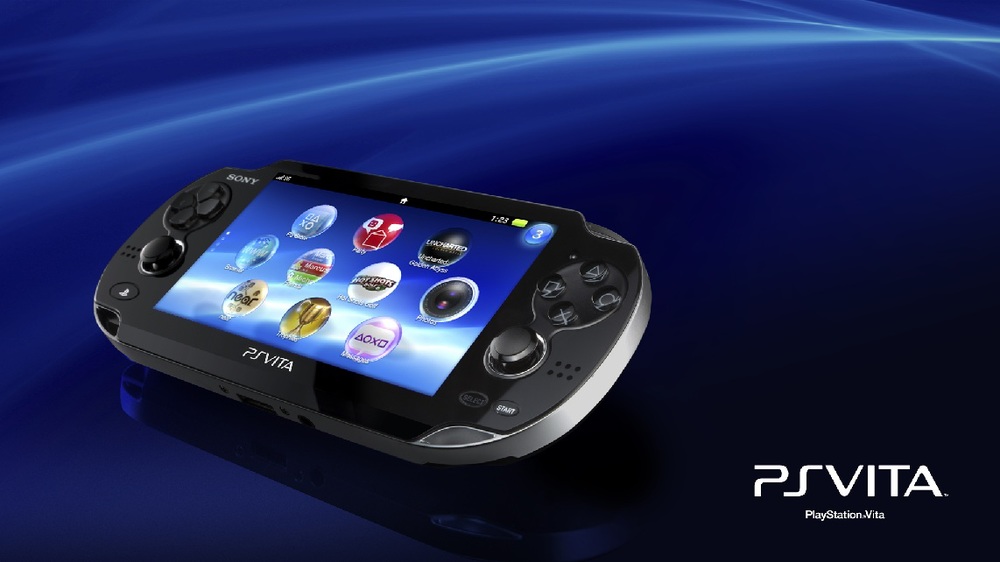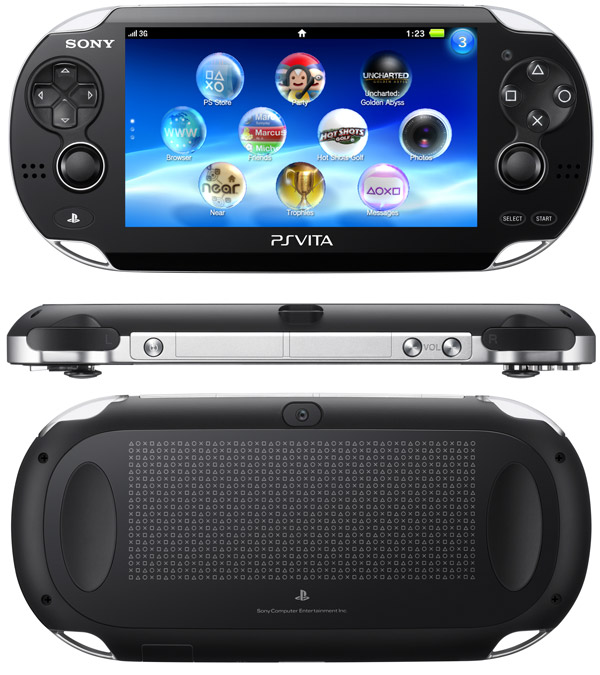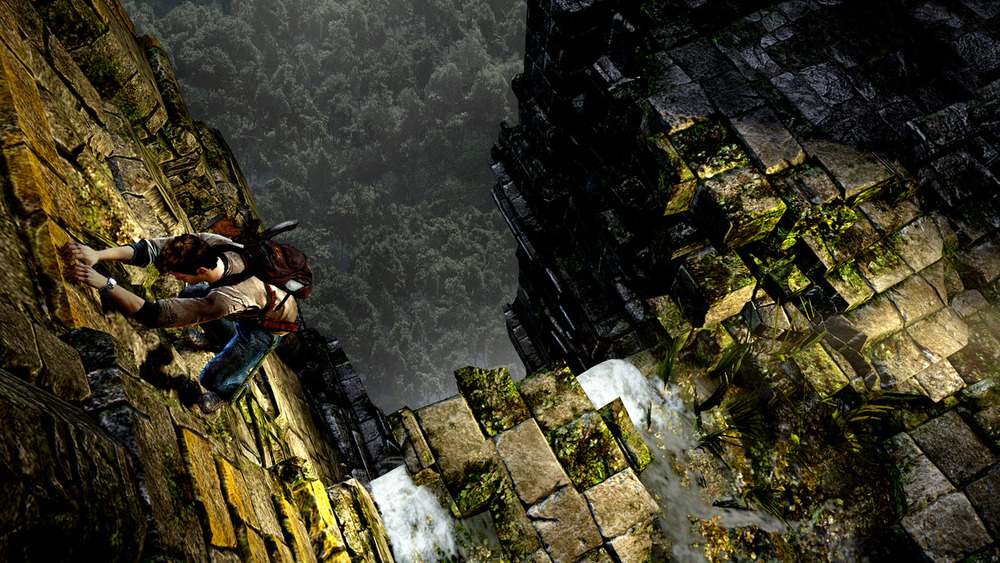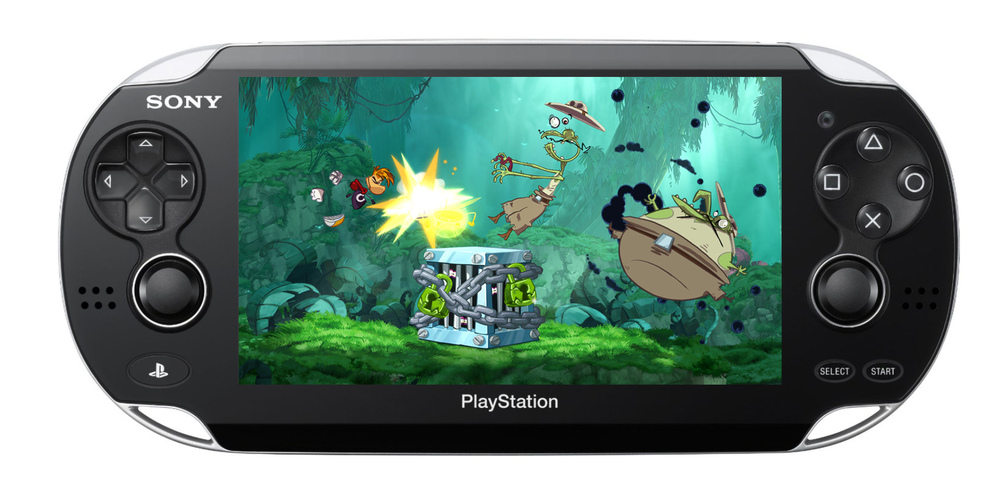Hardware Review: PlayStation Vita

You have to give Sony credit. It takes a ballsy company to release major new hardware at a price upwards of £200 in such economically difficult times (and at a time where we're constantly reminded of the games industry's troubling outlook), but it takes even more confidence to launch hardware that, essentially, swims against the tide of current gaming trends. In a market now chock-full of often-shallow social games, 59p Apps for mobile devices and free-to-play triple-A titles, it's an immensely risky strategy to put so much marketing grunt and belief behind a portable gaming machine in which off-the-shelf titles are priced comparatively to their console equivalents, and where going all-in for the hardware is likely to cost much more than buying another home console.
We can therefore pay no greater compliment to the PlayStation Vita than to say it's entirely worth it. Sony has certainly learnt from some of the mistakes they made during the PSP's longer-than-expected lifespan (no doubt due to the systems' long-line of hardware revisions), incorporating a variety of the PS3's own ideals while they're at it, and topping it off with quality in every corner; from the superb build quality of the actual device (sleekness defined), to the quite excellent line-up of launch titles and smart integration of the PlayStation license.
Packing a quad-core processor, 512Mb of RAM and an additional 128Mb VRAM, sufficient to say, this is the most powerful handheld yet by some distance, and a quite remarkable device to get your hands on, that even at launch has a variety of console-quality games to delve into; including but not reserved to Uncharted: Golden Abyss, Rayman Origins, FIFA Football, Motorstorm RC and PlayStation-favourite Wipeout 2048. The 5-inch OLED touch screen (at a resolution of 960 x 544 pixels, no less) is a sight to behold; vivid, crisp and bringing stunning detail to everything from the lush jungle in Golden Abyss, to the bright cartoonish art style that brings the limbless Rayman to life eight years after his last major appearance on consoles.
the most powerful handheld yet by some distance, and a quite remarkable device to get your hands on, that even at launch has a variety of console-quality games to delve into; including but not reserved to Uncharted: Golden Abyss, Rayman Origins, FIFA Football, Motorstorm RC and PlayStation-favourite Wipeout 2048. The 5-inch OLED touch screen (at a resolution of 960 x 544 pixels, no less) is a sight to behold; vivid, crisp and bringing stunning detail to everything from the lush jungle in Golden Abyss, to the bright cartoonish art style that brings the limbless Rayman to life eight years after his last major appearance on consoles.
Packed to the rafters with functionality and varying control methods (the facing touch screen, a rear touch pad, motion control, front and rear facing cameras, dual analogue sticks), it’ll take time for the strength of the system to become apparent. Much like the launch window of any new hardware (particularly the dual touch screens of the DS and 3D capabilities of the 3DS), most of the titles currently on offer for the Vita showcase its features at a trade-off of often annoying and cumbersome controls. We can’t take anything away from the hardware for such instances (Sony, after all, will likely have urged developers to use the Vita to its fullest) but it’s worth noting that it will take time for developers to grow into exactly how to play to the systems’ core strengths instead of tacking on gimmicks.
FIFA Football, for example, while a superb portable entry for the FIFA series, is infuriating to play at times for its use of the rear touch pad as a makeshift goal (tap where you want to shoot). What its makers didn’t consider, or likely overlooked, is the way your fingers rest over the touch pad in-play for comfort purposes – cue an annoyingly large portion of play interrupted by players opting for 40-yard screamers just as an attack begins to flourish. Likewise, Uncharted: Golden Abyss, which otherwise shows good use of touch capabilities, is bogged down in some combat scenarios where the rear touch pad is used for scoping in and out. It might simply require time to get used to, but as an introduction it’s both aggravating and tedious in equal measure.
 Where the Vita’s touch screen comes into its own is navigating the swipe-friendly user interface purpose-built for direct interaction; from literally turning the pages of applications to hide them from view, to swiping effortlessly from menu to menu. And for anyone justifiably annoyed with the PSP’s lacklustre text input keyboard, it’s a pleasure to inform you all that touch-tapping makes it a long-distant memory – where social applications like Twitter and Facebook (removed from the PlayStation Store for the time being) will of course reap the benefits from such ease of use.
Where the Vita’s touch screen comes into its own is navigating the swipe-friendly user interface purpose-built for direct interaction; from literally turning the pages of applications to hide them from view, to swiping effortlessly from menu to menu. And for anyone justifiably annoyed with the PSP’s lacklustre text input keyboard, it’s a pleasure to inform you all that touch-tapping makes it a long-distant memory – where social applications like Twitter and Facebook (removed from the PlayStation Store for the time being) will of course reap the benefits from such ease of use.
Even aside from the Vita’s prowess as a portable game console (a large portion of which is down to the device’s dual-analogue sticks – a critical oversight in the first, now a mooted selling point), the successor to the PSP fares equally as well when getting down to the nitty-gritty of online capabilities, digital downloads and firmware. And that’s because Sony has not only learnt from the PlayStation Portable and its seven year life cycle but, you feel, has taken on invaluable lessons from the flawed-at-market PSP Go that, aside from its god-awful name, tested the waters somewhat for a digital download-only future. Such a future isn’t here yet, as the PSP Go largely proved, so instead Sony has allowed the Vita to encompass the best of both worlds. As far as we can see, every Vita title is available as both a download and at retail with a flexible price structure in effect for new releases –- titles like Uncharted are priced at console standards, while Wipeout enjoys a price at around the £30 mark and Motorstorm RC is just £4.79 -- meaning the diversity of choice is exceptional, and demos for each mean even without putting a lump sum of money into the Vita at launch, there’s more than enough chance to try out the systems’ best offerings to date. Continued support like this will likely pay huge dividends in the future in terms of software sales.
On the social side of things, the Vita follows the 3DS’s lead in coming with a Street Pass-like ‘Find the nearest player to me’ application, named ‘Near’, that with the 3G capabilities of the WiFi/3G model ought to give Vita owners another avenue of which to go down to find competitive opposition. The much longed-for Party chat also makes its PlayStation debut with Vita, allowing up to 8 people to chat amongst each other in a group in parallel to the games they’re playing. Though it’s been a staple on Xbox 360 for some time, it’s nice to see that Sony has finally given in to public demand for the social feature, even if it still remains strangely absent from PS3 shores.
While on the subject of the PS3, it’s great to see the Vita integrate so well with the PlayStation Network (sorry, the Sony Entertainment Network), with trophies you earn on Vita contributing to your overall trophy level, and your friends list directly transferable to the portable. While we haven’t yet had the  inclination to use the Remote Play feature –- which allows the Vita to stream PS3 games –- early word is that it fails to live up to the hype. That means no Killzone 3 (shown off working at TGS, perhaps prematurely), and actually very few titles of note at all; bar all original PlayStation One games, a handful of PSN titles and a few PS3 titles (Lair, Lego Batman, Singstar). Showing Sony's new handheld isn't averse to piracy (something that plagued the PSP), some nefarious do-wrong'ers however have already released a hack for both the PS3 and Vita that allows PS3 games outside of Sony's sanctioned remote-play capable titles to be streamed - we've seen a number of videos on YouTube showing the likes of Battlefield 3, Red Dead Redemption and Batman: Arkham City working as intended through the system's 5-inch OLED screen. We'd love to see Sony follow suit and open up the platform in a much bigger way than it has so far.
inclination to use the Remote Play feature –- which allows the Vita to stream PS3 games –- early word is that it fails to live up to the hype. That means no Killzone 3 (shown off working at TGS, perhaps prematurely), and actually very few titles of note at all; bar all original PlayStation One games, a handful of PSN titles and a few PS3 titles (Lair, Lego Batman, Singstar). Showing Sony's new handheld isn't averse to piracy (something that plagued the PSP), some nefarious do-wrong'ers however have already released a hack for both the PS3 and Vita that allows PS3 games outside of Sony's sanctioned remote-play capable titles to be streamed - we've seen a number of videos on YouTube showing the likes of Battlefield 3, Red Dead Redemption and Batman: Arkham City working as intended through the system's 5-inch OLED screen. We'd love to see Sony follow suit and open up the platform in a much bigger way than it has so far.
Without question, the Vita is the most powerful and most compelling piece of portable gaming hardware to date that relies not on the gimmick of added dimensions, or indeed price points of pence to draw in the crowds. Put simply, the Vita is a gamer's handheld through-and-through; boasting near console-quality graphics, a fantastic line-up of games both in present and future (we await LittleBigPlanet Vita with bated breath), stunning functionality and a whole load of promise. 9/10

